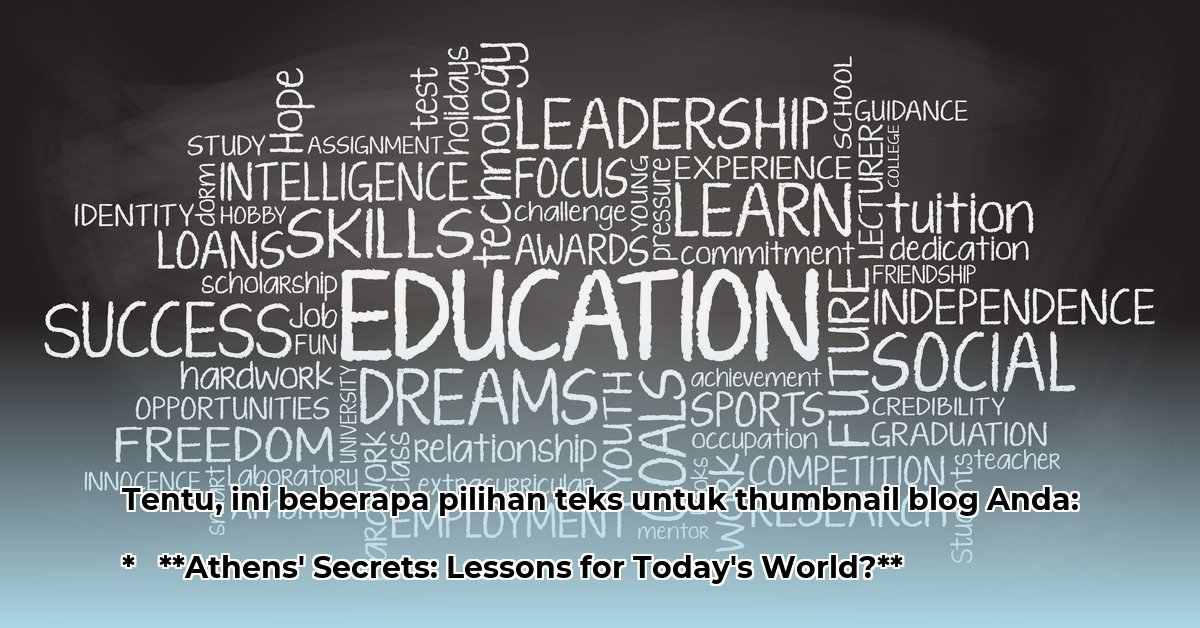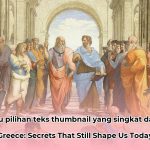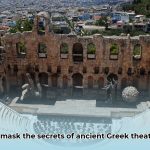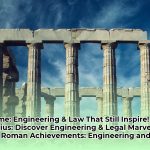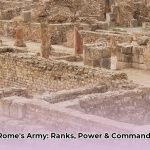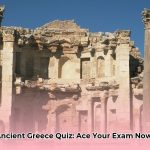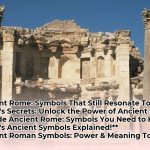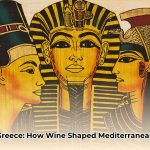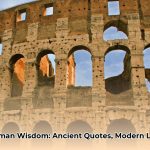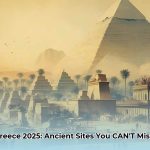Ever wondered what schooling was like in the ancient world? Let’s journey back to ancient Athens – a city synonymous with philosophy, democracy, and groundbreaking ideas – to explore its unique approach to education. Far from a simple curriculum, Athenian learning aimed to forge well-rounded citizens, sharpen intellects, and prepare individuals for active roles in society. This journey will uncover how they sought to develop mind, body, and spirit, while also acknowledging the profound exclusions that shaped their system. Discover clever ancient techniques, the paramount importance of community involvement, and the enduring insights we can still glean today regarding civic engagement and personal development. Here’s more about the classical philosophers.
Education in Ancient Athens: Shaping Minds and Citizens
Unlike the rigorous, military-focused training prevalent in Sparta, ancient Athens cultivated an exceptional educational system. This system was meticulously crafted to produce well-rounded citizens (a concept embodying holistic development) poised for participation in their nascent democracy. It wasn’t merely about academic instruction; it encompassed a blend of physical discipline, intellectual discourse, and moral cultivation. How precisely did they educate their citizenry back then? Let’s delve into the core mechanisms of ancient Greek education.
Foundations of Early Learning: From Paidagogos to Grammatistes
For an Athenian boy, formal education typically commenced around the age of seven. His journey was often guided by a paidagogos (a trusted family servant, often enslaved, responsible for the boy’s safety and conduct, accompanying him to school). The foundational instruction, known as didaskaleion (“a place for instruction”), took place in private schools established by teachers. The earliest references date back to the late 7th or 6th century BCE, marking Athens’ divergence from a purely soldier-centric education model.
The basic elements of literacy – reading, writing, and elementary arithmetic – came from a grammatistes (a primary teacher). These early lessons likely involved the use of wax tablets and styluses for practice, a common method for learning letters and numbers. The generic term scholē, meaning leisure, also began to denote schooling, referencing its preserve among the wealthier sector of society.
As a student progressed, he would move on to a grammatikos (a grammar teacher). This educator introduced more sophisticated literature, with a strong emphasis on the works of revered poets like Homer and Hesiod, playwrights such as Sophocles, and historians including Herodotus. Imagine learning epic tales and tragic narratives while simultaneously mastering the lyre, under the tutelage of a kitharistes (a music teacher who taught the lyre, and sometimes the flute)! This comprehensive approach reflects the Athenian valuing of both literacy and artistic expression. Music lessons included learning to play instruments, singing, and dancing, with the lyre often accompanying the recitation of lyrical poems.
Beyond intellectual pursuits, physical conditioning was deemed crucial. Boys engaged in training at the palaestra (a wrestling school, frequently part of a broader gymnasium complex). Through various athletic activities like wrestling, running, and pankration (a form of combat sport), they developed strength, agility, and discipline, embodying the Athenian ideal of physical readiness for military service and civic life. The city, which remained the primary framework of Greek life, often supported these institutions, sometimes through the contributions of wealthy benefactors.
The Ideal Athenian: Cultivating Kalos K’agathos and Paideia
The Athenians aspired to an ideal known as kalos k’agathos, which roughly translates to “beautiful and good.” This concept referred to the quintessential citizen—an individual possessing both moral integrity and intellectual prowess. This relentless pursuit of excellence served as a fundamental driving force behind much of their educational framework, fostering a profound sense of civic engagement. Teachers were as much concerned with supervising a child’s character formation and good conduct as with directing their progress in academic subjects.
Poetry played a pivotal role in transmitting traditional wisdom and narratives of heroic figures across generations. This included the moralizing elegies of the 6th-century lawmaker Solon and the old Homeric ideal of competition and heroic exploit. Over time, specialized sports alongside more abstract philosophical contemplation gained prominence, establishing a harmonious balance between physical and mental training. A central concept underpinning this entire system was paideia (a holistic term encompassing moral, intellectual, physical, and artistic development). It represented a complete approach to shaping individuals, aiming to mold them into responsible, capable, and virtuous contributors to society. This thorough, integrated approach to learning distinguished Athens from mere vocational or skill-based instruction, focusing on the formation of mature citizens.
The Dawn of Higher Learning: Sophists, Socrates, Plato, and Aristotle
As young Athenian men matured, opportunities for advanced learning emerged, largely influenced by the Sophists (traveling educators). These influential figures, often foreign teachers, offered instruction in rhetoric (the highly prized art of persuasive public speaking), dialectic (logical argumentation or debate), and other essential skills for navigating and excelling in the burgeoning Athenian democracy. The ability to articulate ideas effectively and argue convincingly was indispensable for participating in public debates and influencing key societal decisions. Their professional and practical teaching met a new need in Greek society, making public affairs the supreme occupation.
However, the renowned classical philosopher Socrates (c. 470–399 BCE) fundamentally challenged the Sophists’ primary focus on practicality and winning arguments. He contended that the earnest pursuit of truth and virtue held greater significance than simply being persuasive, famously doubting that virtue could be taught for money. Socrates employed a form of inquiry-based learning known as the Socratic Method, asking probing questions to encourage critical thinking and self-reflection, emphasizing self-discovery in the pursuit of knowledge.
In response to this philosophical landscape, Plato (c. 428–348/347 BCE), a prominent student of Socrates, established the Academy in the 4th century BCE (around 387 BCE). This pioneering institution profoundly emphasized dialectic and rigorous philosophical inquiry. Plato believed that genuine leaders (philosopher-kings) should be intellectually cultivated and capable of comprehending profound concepts like “the Good,” which he detailed in his famous work, The Republic. His program included a rigorous 15-year study of dialectics and mathematical reasoning for an elite few, the “persons of gold,” who could attain understanding of genuine reality.
Concurrently, Isocrates (436–338 BCE) founded his own school about 390 BCE, which concentrated on rhetoric and practical wisdom, specifically designed to prepare citizens for effective public service. His program was more literary than scientific, emphasizing the study and imitation of classical texts and extensive rhetorical practice. While these two parallel forms of higher education were distinct, they weren’t entirely in conflict, both opposing the utilitarianism of the Sophists and influencing each other.
Aristotle (384–322 BCE), Plato’s most celebrated student and tutor to the young prince who became Alexander the Great, established his own school, the Lyceum, around 335 BCE. He advocated for state control over education, believing it should be directed toward shaping truly virtuous citizens in a “polity” (limited democracy). His proposed curriculum balanced physical development (from birth to age 7), with literacy, numeracy, music, grammar, literature, and various sciences (ages 7-17), culminating in encyclopedic and intensely intellectual interests in biology, physics, ethics, rhetoric, and philosophy for a select few. The Lyceum was notably more empirical and focused on the natural world than Plato’s Academy. Nevertheless, access to this elite level of learning remained restricted to an exclusive few.
The Ethos of Military Training: The Vow of Youth
The education of Athenian youths also included the art of war, for they were the future soldiers who would protect the city from its enemies. Special teachers, sometimes referred to as pedophiles (in the ancient sense of “boy-lovers” or tutors, not the modern pejorative), taught youths to fight like hoplites and trained them on weapons such as the sword, spear, lance, bow, and slingshot.
Training in Athens lasted until young men reached the age of 18. At this pivotal age, they became Athenian citizens (if their parents were Athenians), acquired political rights, and joined the city’s armed forces as ephebes (a social class for military service). Upon reaching the age of 18, the Athenian youth took the “vow of youth” at the sanctuary of Aliavros, located north of the Acropolis. This sacred oath cemented their commitment to the state:
“I will not shame my sacred weapons, I will not abandon my comrades-in-arms in battle, I will fight for my sanctuaries and my city, and I will hand them over, not smaller than I received them, but bigger and stronger if my forces and my fellow citizens help me. I will obey the rulers and the laws, both those that are in force and those that will be enacted in the future. If anyone tries to overthrow the laws, I will stop him vigorously and with the help of my fellow citizens. I will always honor my fathers (ancestors) and take as my witnesses: the gods, the borders of my homeland, the grains, the vines, the olives, the figs, the barley, and all the goods it offers.”
This powerful vow underscored the deep connection between education, military service, and civic duty in ancient Athens. The state even took financial care of the widows and orphans of those who had fallen in war, providing education for orphans until they were 18, culminating in a public ceremony at the Dionysus theater where they received hoplite armor and were declared adults.
The Hellenistic Influence: Paideia Beyond Athens
Following the extensive conquests of Alexander the Great between 334 and 323 BCE, Greek culture diffused across vast eastern territories, expanding its eastern frontier from the Aegean to Central and South Asia. This cultural expansion also meant that paideia – the Athenian pedagogical approach – became more widespread throughout the Hellenistic period education. Although adapted in certain aspects, the fundamental tenets of personal development intertwined with civic responsibility maintained their significance. Hellenism’s unity rested on a common Greek way of life, an ideal now focused on man as an individual.
Hellenistic education continued to prioritize gymnastics, music, and literary studies, largely sustained by municipal support and affluent individuals through private foundations and public benefactors. Gymnasiums remained central, serving different age groups and sometimes sexes, complete with palaestrae, training rooms, and stadions. Yet, notable modifications did occur. For instance, the emergence of professional sports and a decline in instruction involving musical instruments signaled a departure from the original holistic emphasis that characterized early Athenian learning, highlighting shifts in societal values. Athletic sports as spectacle endured, but their educational role diminished after the Christian period. Music, similarly, became more the concern of professionals than a broadly practiced art.
The Shadow of Exclusion: Who Was Left Out of Athenian Education?
Imagine a society where knowledge is power, yet that power is granted only to a select few. This describes ancient Athens. While often celebrated for its contributions to democracy and philosophy, Athenian society was marked by pronounced inequalities. Formal education was a privilege primarily enjoyed by free-born male citizens whose families possessed the requisite financial means. Did this system leave everyone else in intellectual darkness? Essentially, yes.
Systematic Barriers to Learning
The answer to who was excluded from ancient Athens education encompasses multiple segments of their population:
- Women: Generally barred from formal schooling, any education they received was typically confined to
domestic skillspassed down from their mothers, such as weaving and household management. While some might have achieved intellectual pursuits through informal means within the confines of their homes (like Hypatia of Alexandria, a later but notable exception), formal avenues like Plato’s Academy or the Lyceum remained largely inaccessible for female education ancient Athens. The prevailing societal expectation was that women were primarily concerned with the household and family, not political rights or professional life, thus lacking the education necessary for democracy. - Slaves: As property, enslaved individuals had no inherent right to education. Their labor was valued, not their intellectual capabilities, reinforcing their role in Athenian society. While some enslaved individuals might have received professional training or served as paidagogoi, formal liberal arts education was not for them. Slaves constituted a massive portion of the population (around 40% in Athens), denied access.
- Foreigners (Metics): Although free, these non-citizens lacked the full citizen status essential for complete participation in Athenian civic life, including access to formal education. Their position highlights the strict boundaries of Athenian citizenship.
- Poor Citizens: Even among free-born males,
povertypresented a significant barrier. Families struggling for subsistence could seldom afford the fees for tutors or schools, thus limiting access for a substantial portion of the population. The term scholē, meaning leisure, itself implied that schooling was the preserve of the wealthier.
The Impact of Exclusion and Gendered Divide
The consequences of this selective educational system were profound. It solidified existing social hierarchies, severely limited opportunities for upward social mobility, and ultimately prevented Athens from fully harnessing the talents and potential of its entire population. The exclusion of women from formal learning was not merely an oversight; it was deeply embedded in Athenian societal norms and legal frameworks. The very concept of citizenship, with its attendant rights and responsibilities, was inherently masculine and public. Women, legally under the control of a kyrios (a male guardian), were relegated to the private sphere, their primary purpose centering on marriage, childbirth, and household administration. Their intellectual advancement was simply not deemed necessary for these prescribed roles, contributing significantly to social inequality in ancient Athens.
The answer to how Athenian education excluded women highlights the severe limitation of their economic opportunities. Barred from public life and lacking formal training, women possessed little agency to shape their own destinies or contribute to broader civic discourse. Their voices were largely marginalized, and their potential remained largely untapped. This exclusion also served to reinforce the patriarchal structure of Athenian society, perpetuating the notion that women were intellectually inferior and best suited for domestic responsibilities.
Even within these constraints, Athenian women were not entirely devoid of influence. Within the domestic sphere, they wielded considerable authority, managing households, raising children, and contributing to the family’s economic stability through activities such as weaving. Religious festivals, like the Thesmophoria, provided crucial spaces for communal expression and a degree of autonomy for women. Their roles as priestesses also bestowed upon them authority in religious affairs. These avenues, though circumscribed, allowed women to exercise agency and navigate their lives within the existing social framework.
Ancient Athens Education – Modern Lessons Learned: Bridging Past and Present
Imagine two ancient cities, each holding fundamentally opposing views on how to cultivate a citizen. This striking contrast existed between Athens and Sparta. Athenian education, flourishing around the 5th century BC, was centered on paideia – the comprehensive shaping of a well-rounded individual ready for active participation in civic life. This encompassed intellectual, moral, physical, and artistic development, all integrated into a single vision. If you were a boy from a wealthy family, your education would involve deep dives into grammar, literature, music, and rigorous training at the gymnasium. Later, you would engage in philosophical debates and master the art of rhetoric.
Sparta, however, had a singular focus: creating the ultimate soldier. Their Agoge system (a state-run, rigorous military training program) commenced at the tender age of seven. Boys lived in communal barracks called agelai (“packs”) and experienced intense physical conditioning, combat drills, and absolute obedience. Extensive reading or intellectual pursuits were largely eschewed; the entire system was geared towards forging disciplined warriors prepared to sacrifice for Sparta. This stark difference provides a powerful framework for understanding contrasting pedagogical philosophies.
The Enduring Relevance of Ancient Wisdom
So, what can we ultimately learn from these profoundly different ancient societies? The Athenian emphasis on critical thinking and robust debate remains exceptionally relevant today. Educators should be actively encouraging students to think independently and critically evaluate ideas, rather than merely memorizing facts. The encompassing concept of “paideia” also underscores the profound significance of a balanced education. We should broaden our ancient education curriculum to include a rich array of arts, sciences, and humanities for a complete experience, echoing the Greek ideal of acquiring “the good and the beautiful.”
However, it is vital not to overlook the inherent limitations of the past. Athenian education was a privilege reserved for a select few; it systemically excluded women, enslaved individuals, and foreigners. Are we truly providing equitable access to quality education in our contemporary world? This is a question we must continually pose and address.
What About the Sophists? Their Lasting Impact
We should also consider the Sophists, who played a significant role in higher education. These traveling educators were instrumental in popularizing critical thinking and public speaking. While some contemporary critics accused them of prioritizing persuasion over the pursuit of truth, their teachings undeniably laid the groundwork for contemporary debate practices and various legal frameworks. They helped establish many aspects foundational to modern life, demonstrating the lasting impact of classical learning.
Actionable Insights for Today’s Learners and Leaders
Here’s a breakdown of how we can apply these ancient lessons today, addressing modern education challenges:
| Stakeholders | Short-Term (0-1 Year) | Long-Term (3-5 Years) |
|---|---|---|
| Educators | Incorporate Socratic questioning methods and structured debates into lessons to actively promote critical thinking and intellectual independence among students. |
Design curricula that encourage a truly holistic approach to learning, balancing specialized skills with the broader development of a well-rounded individual capable of thriving in both professional and civic life through deep knowledge and active exploration. |
| Policymakers | Implement initiatives to deliberately address educational disparities, aiming to ensure equitable access to high-quality education for all students, irrespective of their socio-economic background or location. |
Develop and expand programs that explicitly promote civic education and actively engage students in democratic processes, fostering a strong sense of responsibility. Revisit policies to encourage healthy lifestyles through public or state-sponsored sports and physical activity initiatives, aligning with the “beautiful and good” ideal. |
| Parents/Guardians | Actively expose children to information and experiences that allow them to explore the arts, sciences, and `humanities |
- Unearth ancient rome achievements: Engineering feats & legal legacies, examined - August 13, 2025
- Unlock ancient rome army ranks: Power, impact & legion command - August 13, 2025
- Conquer Your Exam: Ancient Greece Quiz Ace It Now! - August 13, 2025
